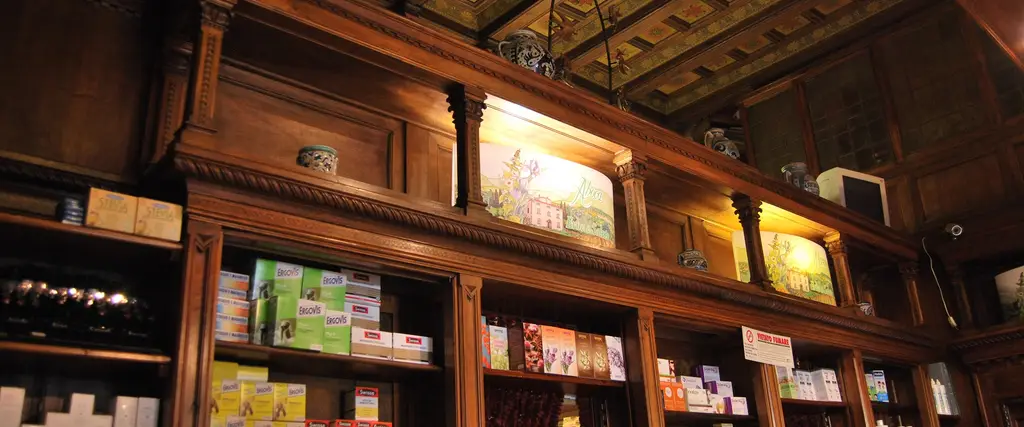
Farmacia Canto alle Rondini
Founded in the 14th century, it is one of the oldest pharmacies in the world and, as you can read on the plaque inside the shop, “the apothecary Matteo Palmieri - historian, moralist and poet, an example of simple but industrious life - worked here”.
Originally, the shop was located at the corner between Via Verdi and Via Pietrapiana, named Canto alle Rondini (Swallows Corner) in reference to the coat-of-arms of the Uccellini Family, owners of the palace, featuring three silver swallows on a red background. At the beginning of the 20th century, Adolfo Coppedè designed its neo-gothic furnishings and commissioned Umberto Bartoli to create a tabernacle with the statue of the Virgin crowned by a garland of swallows.
In 1938, following the building renovation in the Santa Croce district, decreed by the Fascist authorities, the palace with its pharmacy were demolished. The area remained empty for a long time, until 1962, when the Palazzo delle Poste (Post Office), designed by Giovanni Michelucci, was built on that site. The pharmacy and its tabernacle had been moved to the present location in via Pietrapiana: furnishings and decorations were adapted to the new premises, in order to remain faithful to the original plan by Coppedé.
The shop features a coffered ceiling, while the back wall is adorned by mural decorations. Shelves, glass cabinets, doors and cupboards in carved walnut, with oil-painted panels, decorate the walls. The sales counter is inspired by Florentine chests, a piece of furniture typical of the first half of the 15th century. The flood of 1966 caused considerable damages: the Madonna sculpted by Bartoli was lost. All that remains is the garland with gilt swallows, now displayed in the cabinet behind the counter.
The pharmacy also houses a terracotta bust representing Dante, titled "the divine pharmacist".